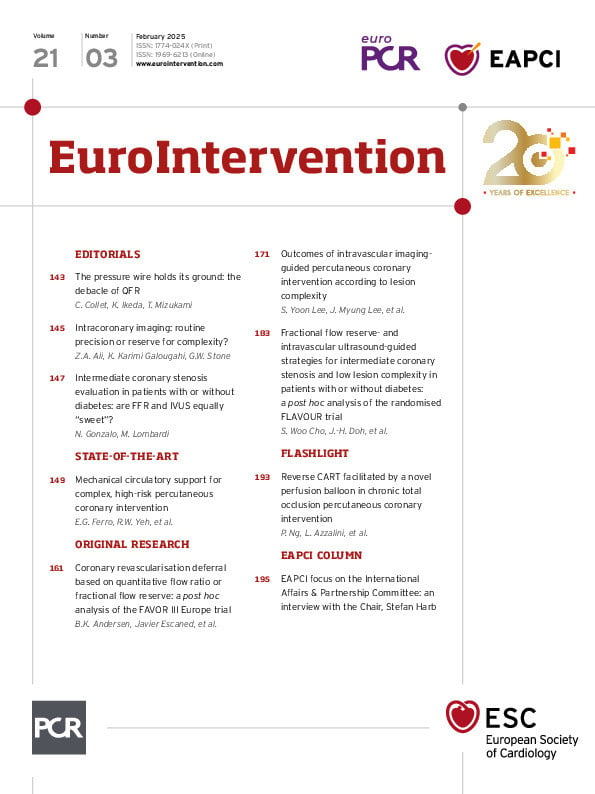Abstract
Background: A recent randomised trial demonstrated fractional flow reserve (FFR) guidance for percutaneous coronary intervention (PCI) was non-inferior to intravascular ultrasound (IVUS) guidance regarding clinical outcomes, with a lower frequency of PCI.
Aims: We sought to evaluate the prognosis of FFR versus IVUS guidance for PCI of intermediate coronary artery stenosis and low lesion complexity in diabetic and non-diabetic patients.
Methods: This study is a prespecified post hoc analysis from the FLAVOUR trial. The primary outcome was major adverse cardiac events (MACE) at 24 months, defined as a composite of death, myocardial infarction or any revascularisation. The secondary outcomes were target vessel failure (TVF) and each component of MACE and TVF at 24 months.
Results: Among 1,682 randomly assigned patients, 554 (32.9%) had diabetes, and the mean SYNTAX score was 8.64±6.03 at baseline. The FFR group had a lower PCI rate than the IVUS group in both diabetic (48.2% vs 69.1%; p<0.001) and non-diabetic (42.6% vs 63.3%; p<0.001) patients. At 24 months, there was no difference in the cumulative incidence of MACE between the FFR and the IVUS groups in either diabetic (9.3% vs 8.3%; p=0.90) or non-diabetic (7.5% vs 8.6%; p=0.50) patients. The cumulative incidence of TVF was also comparable between the FFR and the IVUS groups regardless of diabetic status.
Conclusions: In patients with intermediate coronary stenosis and low lesion complexity, regardless of diabetic status, FFR guidance had no significant differences in MACE or TVF with a lower frequency of PCI compared with IVUS guidance.
Sign up for free!
Join us for free and access thousands of articles from EuroIntervention, as well as presentations, videos, cases from PCRonline.com

